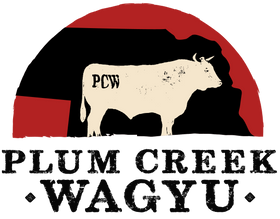Smoking a brisket is an art form, and the stakes are even higher when it comes to Wagyu brisket. Known for its intense marbling, rich flavor, and melt-in-your-mouth texture, Wagyu beef requires a delicate touch to bring out its full potential. Whether you're a seasoned pitmaster or a barbecue enthusiast, this guide will help you perfectly smoke a Wagyu brisket.
1. Choosing the Right Cut
Before you even fire up the smoker, selecting the right Wagyu brisket is crucial. Look for a brisket with plenty of marbling – the fine streaks of fat that run through the meat. This fat will render down during the cooking process, keeping the meat juicy and flavorful.
2. Preparing the Brisket
Trim the Fat
Wagyu brisket typically has a generous fat cap, but you’ll want to trim it down to about 1/4 inch. This allows the fat to render without making the meat greasy. Be careful not to remove too much, as the fat is key to keeping the meat moist.
Seasoning
When it comes to seasoning Wagyu brisket, simplicity is key. A classic Texas-style rub of kosher salt and coarse black pepper lets the natural flavor of the Wagyu shine through. For added depth, you can include a bit of garlic powder or paprika, but avoid overpowering the meat with too many spices.
3. Setting Up Your Smoker
Wood Choice
The choice of wood is critical in smoking Wagyu brisket. Post oak is a traditional favorite in Texas barbecue, offering a mild, smoky flavor that complements the richness of Wagyu. Other good options include hickory or pecan, but steer clear of stronger woods like mesquite, which can overpower the delicate flavor of the Wagyu.
Temperature
Maintain your smoker at a steady temperature of 225°F to 250°F. Wagyu brisket benefits from low and slow cooking, which allows the fat to render gradually, resulting in tender, juicy meat.
4. Smoking the Brisket
The First Phase: The Smoke
Place the brisket on the smoker with the fat side up. This allows the melting fat to baste the meat as it cooks. Smoke the brisket for about 6 to 8 hours, or until the internal temperature reaches 165°F. During this phase, the meat will absorb the smoky flavor and develop a beautiful bark.
The Stall
Around 160°F to 170°F, the brisket will hit “the stall,” where the internal temperature plateaus. This is normal and can last for several hours. Resist the temptation to increase the heat. Instead, you can wrap the brisket in butcher paper or aluminum foil to push through the stall while preserving moisture.
The Finish
Continue smoking until the internal temperature reaches 195°F to 205°F. This is the sweet spot where the collagen breaks down, making the meat incredibly tender. If you’ve wrapped the brisket, keep it wrapped until the end.
5. Resting the Brisket
Resting is a crucial step that should not be skipped. Once the brisket reaches the desired temperature, remove it from the smoker and let it rest, still wrapped, in a cooler or a warm oven for at least an hour. This allows the juices to redistribute throughout the meat, resulting in a more flavorful and tender brisket.
6. Slicing and Serving
When it’s time to slice the brisket, be sure to cut against the grain to ensure tenderness. Start with the flat end and work your way to the point, slicing the meat into 1/4-inch thick slices.
Serve your Wagyu brisket with classic sides like coleslaw, pickles, and a simple barbecue sauce on the side – though with Wagyu, the meat is so rich and flavorful that sauce is entirely optional.
A Labor of Love
Smoking a Wagyu brisket is a labor of love, but the result is worth every minute. With its unparalleled marbling and flavor, Wagyu brisket can elevate your barbecue experience to a whole new level. Whether you’re cooking for a special occasion or just because, this guide will help you achieve brisket perfection every time.
Purchase yours now so you can be ready for those perfect fall football days! (And show off to all your friends.)
Related Posts
The Growing Demand for Sustainable Wagyu Ranching: Examining Eco-Friendly Practices in the Wagyu Industry
Explore the growing demand for sustainable Wagyu ranching and how eco-friendly practices like grass-fed systems, rotational grazing, and water conservation are shaping the future of the industry. Learn why sustainable Wagyu is the better choice for both the environment and your taste buds.
How to Identify Authentic Wagyu Beef: Tips for Spotting Real Wagyu and Avoiding Imitations
Learn how to spot authentic Wagyu beef and avoid imitations. From marbling and grading to labels and pricing, discover the key factors that distinguish real Wagyu from "Wagyu-style" beef. Get tips for buying premium, genuine Wagyu every time.
The Growing Demand for Sustainable Wagyu Ranching: Examining Eco-Friendly Practices in the Wagyu Industry
xplore the growing demand for sustainable Wagyu ranching and how eco-friendly practices like grass-fed systems, rotational grazing, and water conservation are shaping the future of the industry. Learn why sustainable Wagyu is the better choice for both the environment and your taste buds.
The Rise of American Wagyu: How It Differs from Japanese Wagyu
Learn about the rise of American Wagyu and how it differs from Japanese Wagyu. From genetics and feeding practices to marbling and flavor, explore the unique qualities of both and why American Wagyu is a delicious, more accessible option for beef lovers.
Why Wagyu Beef Is Worth the Investment
Wondering why Wagyu beef is worth the investment? From exceptional marbling and genetics to its unique flavor profile and healthier fat composition, discover what makes Wagyu beef the ultimate luxury choice for your next meal.
Holiday Feasts with Wagyu: The Ultimate Luxury Dinner
Make your holiday feasts extraordinary with Wagyu! From prime rib roasts to tenderloin Wellington and luxurious side dishes, discover creative ways to incorporate Wagyu into your festive meals.








